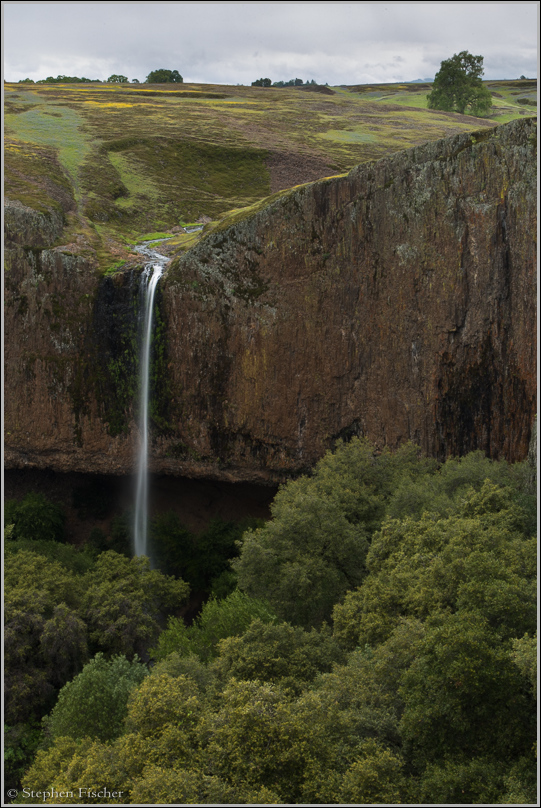Picture of the week

Coal canyon falls
The Coal Canyon waterfall pouring off the North Table Mountain plateau following a recent series of rainstorms. Some maps indicate this as Phantom Falls and Basalt Canyon. The North Table Mountains are located just northeast of Oroville, CA. They were formed from basalt lava rock that in ancient times poured down from from the east through an ancient river valley. Over time the erosion wore away the surrounding river canyon rock walls, leaving behind the harder lava rock formations. In a way one can compare the formation of this plateau to something like a how cast metal is formed from the softer mold material. Once the mold is broken away, you are left with the harder material, in this case the basalt volcanic rock.
Underneath this plateau the rocks cuts inward. This is most likely due to the lower layer of this rock are the remains of the ancient river bed, which being softer with more sedimentary material also has been more quickly eroded. Given placer gold tends to be found naturally in such river beds, they can be a noteworthy location for prospectors in search of gold. This is one is no exception, where some tunnels have been discovered underneath this waterfall, dug by someone(s) in secrecy trying to strike it rich, but more recently discovered by locals and administrators of this land.
Today the Table Mountain preserve is managed by the State of California department of fish and wildlife and open to the public, free of charge. On weekends during March and April the Table Mountains are quite popular with visitors for the bountiful number of wildflowers that can be found here covering miles of the ground.
All content and images are property of Stephen Fischer Photography, copyright 2014. Last updated: 4/1/2014 ()
 Mar
9, 2014
Mar
9, 2014 Mar
2, 2014
Mar
2, 2014 Feb
23, 2014
Feb
23, 2014 Jan
26, 2014
Jan
26, 2014 Jan
12, 2014
Jan
12, 2014